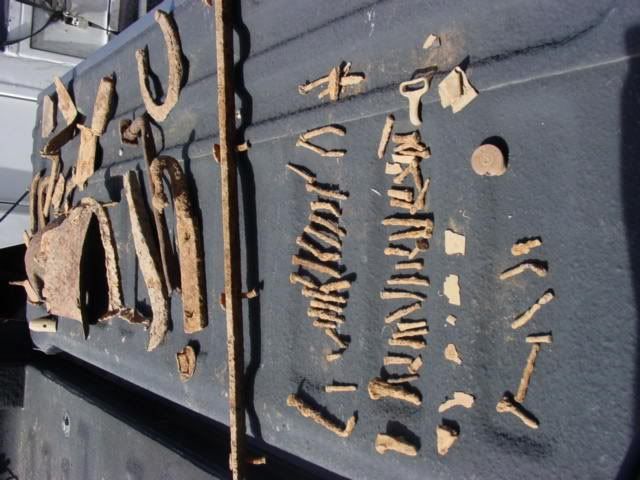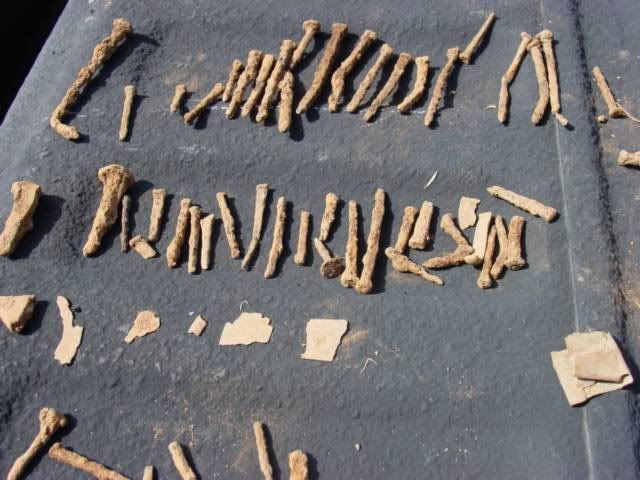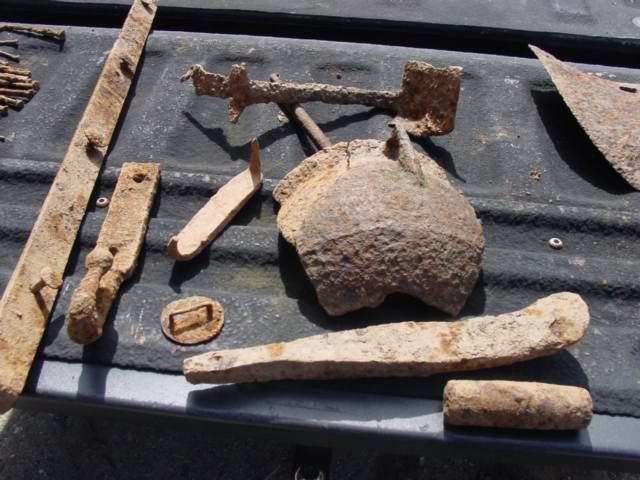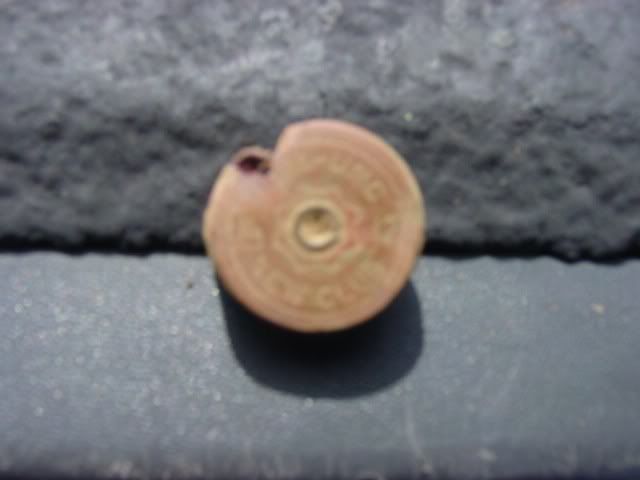Hello Everyone,
I've been using my Goldstinger for general prospecting in the All-Metal Mode for some twenty years, and dug everything up until about five years ago. The areas I search are inundated with large (and small) iron...particularly iron bars approx. 6 inches long and 1+1/2 inches in diameter. At depth and depending on orientation, these bars read similar to good nickel and silver ores. You may have a pretty good idea that it's iron, but you can't be sure...so you dig. The Goldstinger cannot discriminate these bars (and was never designed to either) without eliminating everything else, so about 5 years ago, I started using the iron discrimination on my Spectrum XLT. When you can get a good solid signal (frequently requiring some digging to get closer), the XLT will give you a reliable iron indication; even if the audio sounds reasonably good and "diggable", the visual signagraph is more accurate and will reliably build bars either scattered right across, or, at least on the negative left side of the graph. (I've proven this reliability many times to myself, while in the same customized Relic Mode, a small low grade piece will read beautifully with a VDI about 3 or 4, so please, lets not debate this here.) This saves me a lot of unnecessary digging, and has made the past five years far more productive.
I do not use the XLT for prospecting (for reasons I don't want to discuss here, but it's just not suitable for me), but I do have to carry it along as well as my other detector and equipment to check suspect iron bars...which is the reason I've been looking at updating my almost 20 years old equipment. I'd like to find a detector that's lightweight, metered in all metal (as well as the discriminate) circuit, operate close to say 15 kHz frequency, and is able to give some indication or clue.. when over these iron bars.
Will the F-75 perform this task? Would some of you mind doing a quick bench (air) test on similar size rusty iron, both with iron discrimination, and without it. Maybe check in the bottlecap mode as well for comparison. Another question...which is more reliable...the visual, or the iron tone? Your help is very much appreciated, so please let us know your results...thankyou...Jim. PS...pls feel free to PM me.
I've been using my Goldstinger for general prospecting in the All-Metal Mode for some twenty years, and dug everything up until about five years ago. The areas I search are inundated with large (and small) iron...particularly iron bars approx. 6 inches long and 1+1/2 inches in diameter. At depth and depending on orientation, these bars read similar to good nickel and silver ores. You may have a pretty good idea that it's iron, but you can't be sure...so you dig. The Goldstinger cannot discriminate these bars (and was never designed to either) without eliminating everything else, so about 5 years ago, I started using the iron discrimination on my Spectrum XLT. When you can get a good solid signal (frequently requiring some digging to get closer), the XLT will give you a reliable iron indication; even if the audio sounds reasonably good and "diggable", the visual signagraph is more accurate and will reliably build bars either scattered right across, or, at least on the negative left side of the graph. (I've proven this reliability many times to myself, while in the same customized Relic Mode, a small low grade piece will read beautifully with a VDI about 3 or 4, so please, lets not debate this here.) This saves me a lot of unnecessary digging, and has made the past five years far more productive.
I do not use the XLT for prospecting (for reasons I don't want to discuss here, but it's just not suitable for me), but I do have to carry it along as well as my other detector and equipment to check suspect iron bars...which is the reason I've been looking at updating my almost 20 years old equipment. I'd like to find a detector that's lightweight, metered in all metal (as well as the discriminate) circuit, operate close to say 15 kHz frequency, and is able to give some indication or clue.. when over these iron bars.
Will the F-75 perform this task? Would some of you mind doing a quick bench (air) test on similar size rusty iron, both with iron discrimination, and without it. Maybe check in the bottlecap mode as well for comparison. Another question...which is more reliable...the visual, or the iron tone? Your help is very much appreciated, so please let us know your results...thankyou...Jim. PS...pls feel free to PM me.









